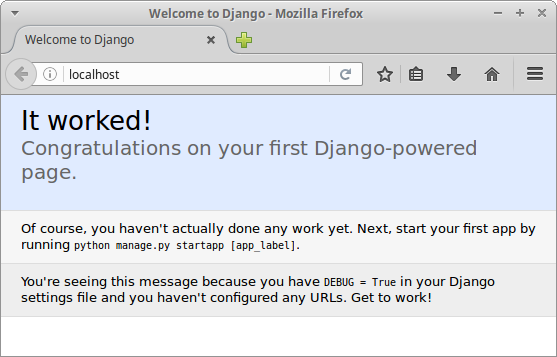Install Python 3.4 Ubuntu
Ubuntu 18.04 as well as Ubuntu 17.10 come with Python 3.6 pre-installed, which is not the case for older Ubuntu versions. In this article, we will explain how to install latest Python 3.6 in Ubuntu 14.04, 16.04, 16.10 and 17.04 via the APT package manager.
Hello Linux Geeksters. Python 3.4.0 has been recently released, coming with a new changes. Among others, it got new library modules, improved the existing library modules and other enhancements. For more information about this release, see the changelog.
In this article I will show you how to install Python 3.4 on Ubuntu 13.10 Saucy Salamander, Ubuntu 12.10 Quantal Quetzal, Ubuntu 12.04 Precise Pangolin, Linux Mint 16 Petra, Linux Mint 14 Nadia, Linux Mint 13 Maya and Elementary OS 0.2 Luna.
Python 3.4.0 will be soon added to the PPA, so installing it is easy. All you have to do is add the ppa to your system, update the local repository index and install the python3.4 package. Like this:
In this article I will show you how to install Python 3.4 on Ubuntu 13.10 Saucy Salamander, Ubuntu 12.10 Quantal Quetzal, Ubuntu 12.04 Precise Pangolin, Linux Mint 16 Petra, Linux Mint 14 Nadia, Linux Mint 13 Maya and Elementary OS 0.2 Luna. Installing Python 3 on Linux¶. This document describes how to install Python 3.6 on Ubuntu Linux machines. To see which version of Python 3 you have installed, open a command prompt and run. This quick tutorial is going to show you how to install Python 3.3.5 (or 3.4.0) and set as default in Ubuntu 12.04. Python 3.3.5 was released on March 9th, 2014. Python 3.4 is installed on the stable release of Ubuntu 14.04. You need to use python3 to use python 3.4. For example, to execute a script file.py, use. Python3 file.py This will use python 3.4 to interpret your program or you can use the shebang to make it executable. Feb 11, 2017 Python 3.6.6 is the latest stable version at the time of writing of tutorial. This Python version is available to download and install. This article will help you to install Python 3.6.6 on Ubuntu and Linuxmint operating system. Mar 17, 2014 In this article I will show you how to install Python 3.4 on Ubuntu 13.10 Saucy Salamander, Ubuntu 12.10 Quantal Quetzal, Ubuntu 12.04 Precise Pangolin, Linux Mint 16 Petra, Linux Mint 14 Nadia, Linux Mint 13 Maya and Elementary OS 0.2 Luna.
$ sudo add-apt-repository ppa:fkrull/deadsnakes
$ sudo apt-get update
$ sudo apt-get install python3.4
Related Posts
Posted in The Linux and Unix Articles!
I installed openpyxl with

Install Pip Python 3.4 Ubuntu
when I try the command
Install Python 3.4 On Ubuntu
I get
I am using Python 3.4 and Ubuntu 14.04, 32-bit OS type
ForceBru6 Answers
@zetysz and @Manish already fixed the problem. I am just putting this in an answer for future reference:
piprefers to Python 2 as a default in Ubuntu, this means thatpip install xwill install the module for Python 2 and not for 3pip3refers to Python 3, it will install the module for Python 3

In order to keep track of dependency issues, I like to use the conda installer, which simply boils down to:
You have to install it explixitly using the python package manager as
Night of revenge game download. At the present, more than 8888 free full games PC are loaded on the website and it has still been in process of building, finishing the contents, so I hope that most of free full games PC could be updated as soon as possible. I am so happy when you connect to my website. System Requirements OS: XP, 7, 8, 10 Processor: 2.5Ghz Dual Core Memory: 1 GB RAM Graphics: NVIDIA GT 440 Download. It created with the purpose is to share free full games PC for all of you. She is forced to retreat for now, vowing to resurrect her child and burn the city to the ground.
- pip install openpyxl for Python 2
- pip3 install openpyxl for Python 3
I had the same problem solved using instead of pip install :
The sudo command also works better for other packages.
rainerrainerIf you don't use conda, just use :
If you use conda, I'd recommend :
instead of simply conda install openpyxl
Because there are issues right now with conda updating (see GitHub Issue #8842) ; this is being fixed and it should work again after the next release (conda 4.7.6)